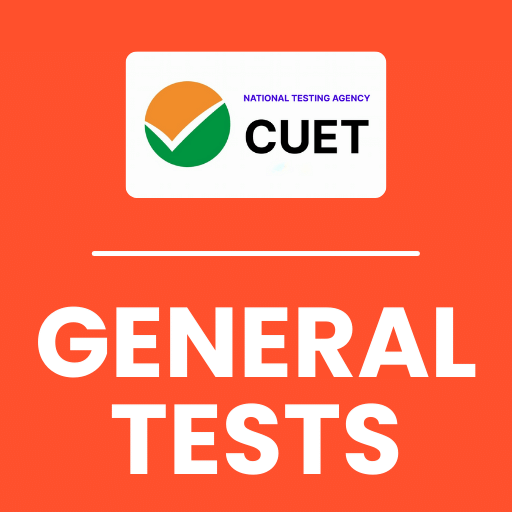Past Tense | English Language Preparation for CUET PDF Download
| Table of contents |

|
| Introducton |

|
| Types of Past Tense |

|
| Summary of Past Tenses |

|
| Solved Questions |

|
Introducton
The past tense in English is used to describe activities, events, or situations that occurred at a specific time in the past. It helps us communicate what has already happened or what was true in the past. Mastering the different types of past tenses is essential for clear and effective communication, especially in both written and spoken English.
Examples
- I walked to the store yesterday.
- John ran a marathon yesterday.
- Did you see the movie?
- Mary and Jane were chatting about the event.
- Mike had completed the project before the deadline.
- Tom realized that Jerry had not been attending the classes for several days.
- Didn’t they inform you about the change in plan?
In these examples, the simple past tense is used to describe an action that happened in the past.
Types of Past Tense
There are four primary types of past tenses in English grammar:
- Simple Past Tense
- Past Continuous Tense
- Past Perfect Tense
- Past Perfect Continuous Tense
1. Simple Past Tense
The Simple Past Tense is used to describe actions that were completed at a specific time in the past. It can also be used to describe past habits or repeated actions.
Structure: Subject (He/She/It/You/We/They) + Past form of the verb (V2)
Examples:
- Ram arrived last night.
- She called me yesterday.
- We usually spent the winter in Paris.
- When I was in Mumbai, I went to Juhu beach.

2. Past Continuous Tense
The Past Continuous Tense is used to express actions that were ongoing at a particular moment in the past. It is often combined with the simple past tense to show a longer action happening when a shorter action occurred.
Structure:
Subject (I/He/She/It) + was + Present participle form of the verb (V+ing)
Subject (You/We/They) + were + Present participle form of the verb (V+ing)
Examples:
- I was painting my room at that time.
- He was playing chess when I saw him.
The past continuous tense often provides the background for a new event or action in the past (expressed using simple past tense).

3. Past Perfect Tense
The Past Perfect Tense is used to indicate that an action was completed before another action or a specific time in the past. It emphasizes the completion of an action before another event occurred.
Structure: Subject (I/He/She/It/You/We/They) + had + Past participle form of the verb (V3)
Examples:
- I got to the bus stand at 6.00, but the bus had left by that time.
- I had not slept much on the ship.
The past perfect tense is particularly useful for showing the order of events in the past.

 |
Download the notes
Past Tense
|
Download as PDF |
4. Past Perfect Continuous Tense
The Past Perfect Continuous Tense describes an action that was ongoing in the past and had just been completed. It focuses on the duration of the action up until a certain point in the past.
Structure: Subject (I/He/She/It/You/We/They) + had been + Present participle form of the verb (V+ing)
Examples:
- Rachel had been making a trifle.
- Ross had been thinking about Rachel.
This tense emphasizes how long an action had been happening before it finished.

Summary of Past Tenses

Solved Questions
Question 1:
Which of the following is an example of the Simple Past Tense?
A) I am reading a book.
B) I read a book last night.
C) I will read a book.
D) I was reading a book.
Answer:
B) I read a book last night.
Explanation:
The Simple Past Tense is used to describe actions completed at a specific time in the past. The sentence "I read a book last night" indicates a past action.
Question 2:
Which sentence uses the Past Continuous Tense?
A) I was eating dinner at 7 PM.
B) I ate dinner at 7 PM.
C) I will eat dinner at 7 PM.
D) I have eaten dinner.
Answer:
A) I was eating dinner at 7 PM.
Explanation:
The Past Continuous Tense describes actions that were ongoing at a specific moment in the past. "I was eating dinner at 7 PM" indicates an ongoing action.
Question 3:
Which sentence is an example of the Past Perfect Tense?
A) I had already finished my homework when the bell rang.
B) I was finishing my homework when the bell rang.
C) I finished my homework.
D) I will finish my homework.
Answer:
A) I had already finished my homework when the bell rang.
Explanation:
The Past Perfect Tense is used to indicate that one action was completed before another action in the past. "I had already finished my homework" happened before the bell rang.
Question 4:
Which sentence uses the Past Perfect Continuous Tense?
A) I had been waiting for hours when they finally arrived.
B) I waited for hours when they finally arrived.
C) I was waiting for hours when they finally arrived.
D) I will wait for hours.
Answer:
A) I had been waiting for hours when they finally arrived.
Explanation:
The Past Perfect Continuous Tense is used to describe an action that was ongoing in the past and ended before another action took place. "I had been waiting for hours" emphasizes the duration of waiting.
Question 5:
Which sentence shows the use of the Past Continuous Tense in combination with the Simple Past Tense?
A) I was reading a book when the phone rang.
B) I read a book when the phone rang.
C) I was reading a book and the phone rang.
D) I had read a book when the phone rang.
Answer:
A) I was reading a book when the phone rang.
Explanation:
The Past Continuous Tense is often used with the Simple Past Tense to show a longer action happening when a shorter action occurs. "I was reading a book" is the ongoing action, while "the phone rang" is the shorter action.
|
80 videos|93 docs|95 tests
|
FAQs on Past Tense - English Language Preparation for CUET
| 1. What are the different types of past tense in English? |  |
| 2. How do you form the simple past tense? |  |
| 3. When should I use the past perfect tense? |  |
| 4. Can you provide an example of the past continuous tense? |  |
| 5. What is the difference between the past perfect and past perfect continuous tenses? |  |

































